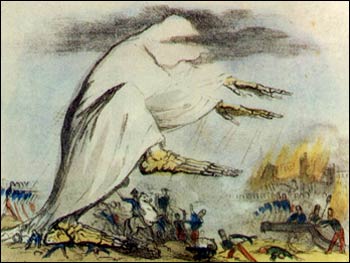Miasma

Well, this is certainly an interesting argument from the historian of medicine Melanie Kiechle. Does the pandemic mean that we need to take 19th century theories of medicine seriously again?
Revisiting the history of miasma theory and its subsequent disappearance from our understandings of disease tells us that our routines for disease prevention have fluctuated with changing knowledge about disease causation. Some of these fluctuations have been beneficial, such as washing hands to reduce bacterial spread and installing window screens to diminish contact with mosquitoes.
Yet other fluctuations, such as ignoring earlier prescriptions for how to combat aerial health threats, have contributed to our current health crisis and pitched political debates over interventions. By recovering the everyday routines that Americans used to combat aerial health threats in the 19th century, we can normalize the seemingly new advice of aerosol engineers and disease experts.
In the early 19th century, medical knowledge was a fusion of ancient concepts and recent observations that explained how illnesses spread. Today we think of diseases as having specific, identifiable causes and symptoms, but in the early 19th century, people experienced illness as a set of interactions between their bodies and the world around them. Medical experts believed that a range of fevers were caused by changes in the ambient environment and that a few specific diseases, like smallpox, somehow spread from person to person.
To protect people’s health from these aerial threats, disease prevention under miasma theory included a range of practices aimed at protecting and improving the air that people breathed. These practices emphasized ample fresh air and sunshine as natural disinfectants necessary for good health.
People also tried to avoid miasmas by not living near or lingering in swamps and marshes, where masses of decomposing organic matter released potent miasmas. (We now know that mosquitoes were the real threat.) They also were wary of crowded churches and theaters, where they might catch various fevers called “crowd diseases” by inhaling vitiated air. In their homes, women opened windows to “air out” rooms and adopted ventilation techniques to create a constant flow of fresh air, meaning air that had not already been exhaled. Women were especially vigilant about the air of sickrooms, the name for any room in which an ill family member convalesced; they developed methods to purify the air of sickrooms and direct it out of the house, away from other family members.
To avoid inhaling foul airs while moving through the city, individuals covered their noses with perfumed handkerchiefs or buried noses in fragrant nosegays — both rudimentary versions of the masks we’ve adopted during the coronavirus pandemic. By the 1870s, scientists were developing face masks that would filter air through charcoal particles, and public health authorities started monitoring the patterns of air movement, paying attention to any smoke- and stench-spewing factories that might be upwind of their jurisdictions. Miasma theory raised concerns about stenches from new and bigger industries such as oil refining and meat packing, concerns that new urban public health departments tried to address through regulation. Because expanding cities created crowded living and working conditions, avoiding miasmas and vitiated air increasingly required government intervention.
It’s very easy to make fun of 19th century medicine, what with its bleeding and its leeches and its crazy patent medicines. But it’s not as if these people were idiots. They did have some sense of what was healthy or not. And they also had a much more visceral sense of their mortality than we do in the 21st century. Part of the COVID pandemic’s response has been a sudden realization that we are not guaranteed to live into our 90s and that some disease could fell us at any time. This would not come as a shock to someone in 1855. It would be the most obvious part of their lives. They didn’t just live with it. They tried to figure out how to do things better. They didn’t have the technology we did. So they used their senses, especially their nose.
Is there something we can learn from this? I guess I don’t know. But is it something worth thinking about seriously? Yes.


